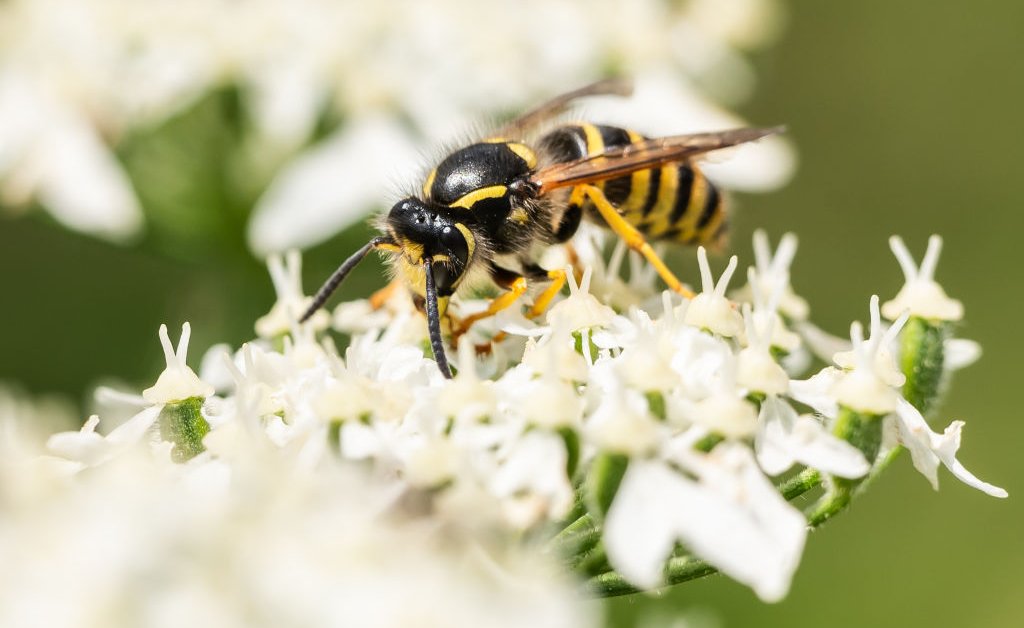Climate Change: What Does It Mean For Summer Bugs?

Welcome to your ultimate source for breaking news, trending updates, and in-depth stories from around the world. Whether it's politics, technology, entertainment, sports, or lifestyle, we bring you real-time updates that keep you informed and ahead of the curve.
Our team works tirelessly to ensure you never miss a moment. From the latest developments in global events to the most talked-about topics on social media, our news platform is designed to deliver accurate and timely information, all in one place.
Stay in the know and join thousands of readers who trust us for reliable, up-to-date content. Explore our expertly curated articles and dive deeper into the stories that matter to you. Visit Best Website now and be part of the conversation. Don't miss out on the headlines that shape our world!
Table of Contents
Climate Change: What Does it Mean for Summer Bugs?
Summer. The season of sunshine, long days, and… swarms of insects. But climate change is dramatically altering the familiar landscape of our summer bug encounters, with potentially significant consequences for ecosystems and human society. From pesky mosquitos to beneficial pollinators, the impact is widespread and complex. This article explores how rising temperatures, shifting rainfall patterns, and increasingly extreme weather events are reshaping the world of summer insects.
Rising Temperatures: A Double-Edged Sword for Bugs
Warmer temperatures are generally beneficial to many insect species, accelerating their metabolic rates and shortening their life cycles. This can lead to:
- Increased populations: Faster reproduction means more bugs, potentially leading to larger swarms of mosquitoes, more aggressive pest infestations, and greater pressure on crops. Areas previously too cold for certain species may now become habitable, expanding their ranges.
- Extended seasons: A longer warm season means a longer breeding season, further contributing to population increases and extending the period when insects are active. This can impact human activities like outdoor recreation and agriculture.
- Shifting geographic ranges: Many species are moving towards higher altitudes and latitudes in search of suitable climates. This can disrupt established ecosystems and introduce new pests to previously unaffected regions.
However, extreme heat can also be detrimental. Prolonged periods of intense heat can lead to mass mortality, particularly for species with limited adaptability.
Changes in Rainfall: A Delicate Balance
Changes in rainfall patterns, including both increased droughts and heavier rainfall events, significantly impact insect populations. Droughts can severely reduce habitat and food sources, leading to population declines. Conversely, excessive rainfall can flood breeding grounds, drowning larvae and pupae.
The Impact on Specific Insect Groups
Climate change isn't affecting all insects equally. Some groups are particularly vulnerable:
- Pollinators: Bees, butterflies, and other pollinators are crucial for agriculture and biodiversity. Changes in flowering times, caused by altered temperatures, can disrupt the delicate synchrony between pollinators and their food sources. This can have cascading effects throughout the ecosystem. (Replace with a relevant link).
- Disease vectors: Mosquitoes and ticks, vectors for diseases like Zika, West Nile virus, and Lyme disease, are expanding their ranges as temperatures rise. This increases the risk of these diseases spreading to new areas and affecting more people.
- Agricultural pests: Warmer temperatures can accelerate the life cycles of agricultural pests, leading to increased crop damage and greater reliance on pesticides. This has significant economic and environmental implications.
What Can We Do?
Addressing climate change is paramount to mitigating its impact on insect populations. This requires a multi-faceted approach, including:
- Reducing greenhouse gas emissions: Transitioning to renewable energy sources and adopting sustainable practices are critical to slowing the pace of climate change.
- Protecting and restoring habitats: Preserving and restoring diverse habitats provides refuge for insects and supports biodiversity.
- Promoting sustainable agriculture: Reducing pesticide use and adopting climate-smart agriculture practices can help minimize the negative impacts on beneficial insects.
The future of summer bugs is intricately linked to our actions today. By understanding the impacts of climate change and taking proactive steps to mitigate its effects, we can help ensure a healthy and balanced ecosystem for both insects and ourselves. Learn more about climate change and its effects at .

Thank you for visiting our website, your trusted source for the latest updates and in-depth coverage on Climate Change: What Does It Mean For Summer Bugs?. We're committed to keeping you informed with timely and accurate information to meet your curiosity and needs.
If you have any questions, suggestions, or feedback, we'd love to hear from you. Your insights are valuable to us and help us improve to serve you better. Feel free to reach out through our contact page.
Don't forget to bookmark our website and check back regularly for the latest headlines and trending topics. See you next time, and thank you for being part of our growing community!
Featured Posts
-
 Trumps Proposal Canada As The 51st Us State
May 29, 2025
Trumps Proposal Canada As The 51st Us State
May 29, 2025 -
 51m Arsenal Bid Accepted Zubimendi Medical Before Official Transfer
May 29, 2025
51m Arsenal Bid Accepted Zubimendi Medical Before Official Transfer
May 29, 2025 -
 Atalanta Pioli In Corsa Per La Panchina L Ultimo Aggiornamento
May 29, 2025
Atalanta Pioli In Corsa Per La Panchina L Ultimo Aggiornamento
May 29, 2025 -
 Stephanie Mc Mahon On Family Loyalty And A Near Tattoo
May 29, 2025
Stephanie Mc Mahon On Family Loyalty And A Near Tattoo
May 29, 2025 -
 Henrique Rocha Choca O Mundo Do Tenis Com Vitoria Em Roland Garros
May 29, 2025
Henrique Rocha Choca O Mundo Do Tenis Com Vitoria Em Roland Garros
May 29, 2025
